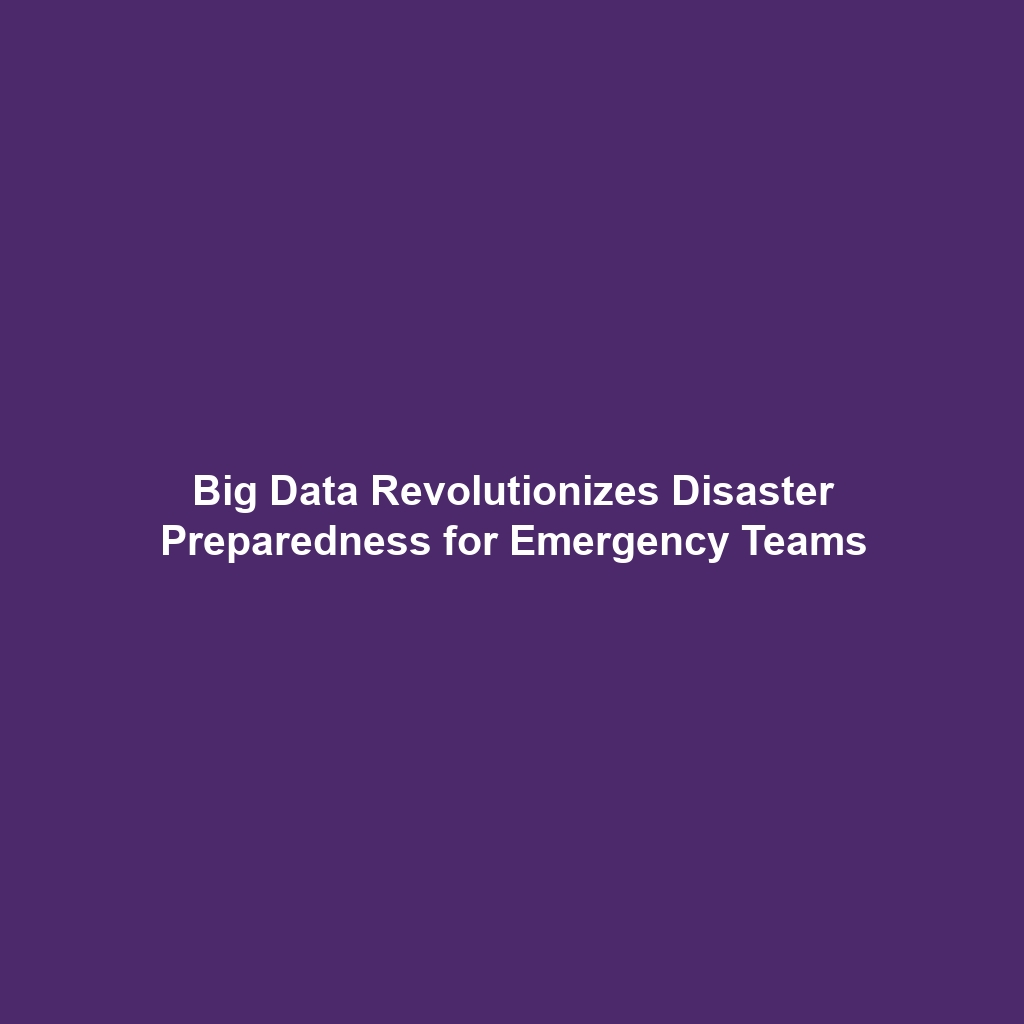Using Big Data for Large-Scale Simulations in Particle Physics
The use of big data in scientific research has transformed how physicists approach experiments, particularly in predicting particle behavior under various conditions. Through large-scale simulations, researchers can analyze massive datasets to model interactions and outcomes, significantly improving design efficiencies and experimental predictions. This article delves into the significance and applications of big data in particle physics, highlighting its pivotal role within the Big Data in Science landscape.
Key Concepts of Big Data in Particle Physics
Understanding how big data facilitates large-scale simulations involves several key concepts:
- Data Acquisition: Collecting vast amounts of data from particle collisions in accelerators or detectors.
- Simulation Models: Utilizing advanced algorithms and computational models to replicate particle interactions.
- Data Analysis Techniques: Employing statistical and machine learning methods to interpret the simulation results effectively.
These concepts underscore the importance of big data in enhancing particle physics experiments, enabling researchers to predict how particles react in diverse scenarios.
Applications and Real-World Uses
There are numerous practical applications of using big data for large-scale simulations in particle physics. For example:
- CERN’s Large Hadron Collider: The LHC generates petabytes of data, which are processed through simulations that predict particle behaviors, aiding discovery efforts like the Higgs boson.
- Astrophysical Simulations: Big data is pivotal in simulating cosmic events, predicting interactions of high-energy particles with celestial phenomena.
- Medical Physics: Simulations of particle behavior are instrumental in designing advanced radiation therapies in cancer treatment.
These examples illustrate how big data in science enhances research outcomes and practical applications in real-world scenarios.
Current Challenges
Despite the advantages of using big data for simulations, several challenges persist:
- Computational Complexity: Simulating high-energy particle interactions requires immense computational resources and time.
- Data Management: The volume of data generated poses significant challenges for storage, retrieval, and processing.
- Model Accuracy: Ensuring that simulations accurately reflect real-world conditions can be difficult, necessitating constant refinement.
These challenges highlight the ongoing need for advancements in technology and methodologies within big data science.
Future Research and Innovations
The future of using big data for large-scale simulations in particle physics is promising, with several innovations on the horizon:
- Quantum Computing: This technology has the potential to speed up simulations significantly, allowing for more complex modeling of particle interactions.
- AI Integration: Artificial intelligence will continue to enhance the efficiency of data analysis and predictive modeling, leading to improved understanding of particle behaviors.
- Collaborative Data Sharing: Initiatives that enable shared access to simulation data across institutions could foster breakthroughs and new discoveries.
These innovations are poised to impact future developments in big data and particle physics significantly.
Conclusion
In conclusion, utilizing big data for large-scale simulations to predict particle behavior is transforming the field of particle physics, offering insights that enhance experimental designs and facilitate groundbreaking discoveries. As the technology continues to evolve, it is crucial for the scientific community to address existing challenges and embrace future innovations. For more insights on big data applications, visit our relevant topics page to explore how big data is revolutionizing various scientific fields.


